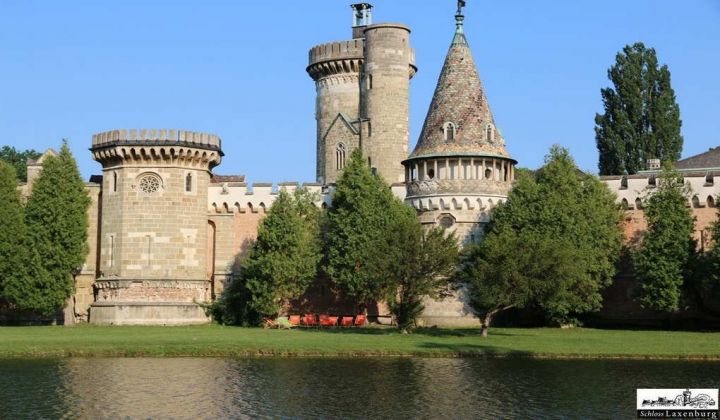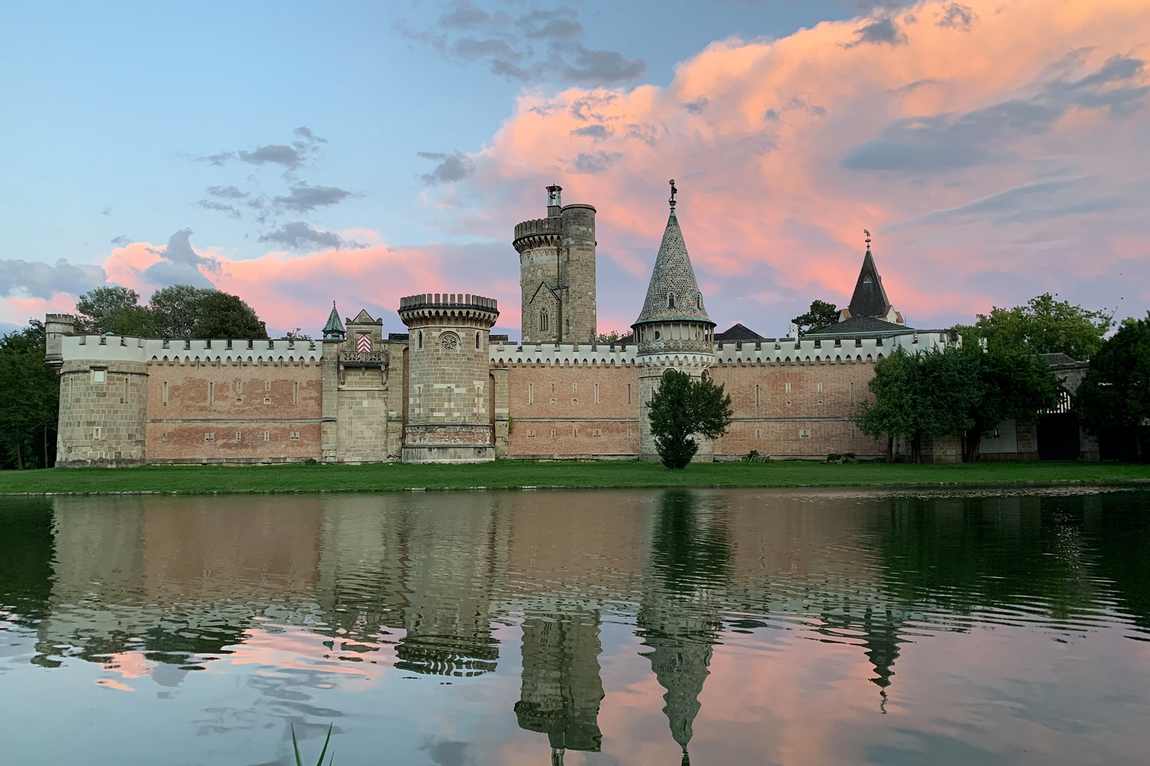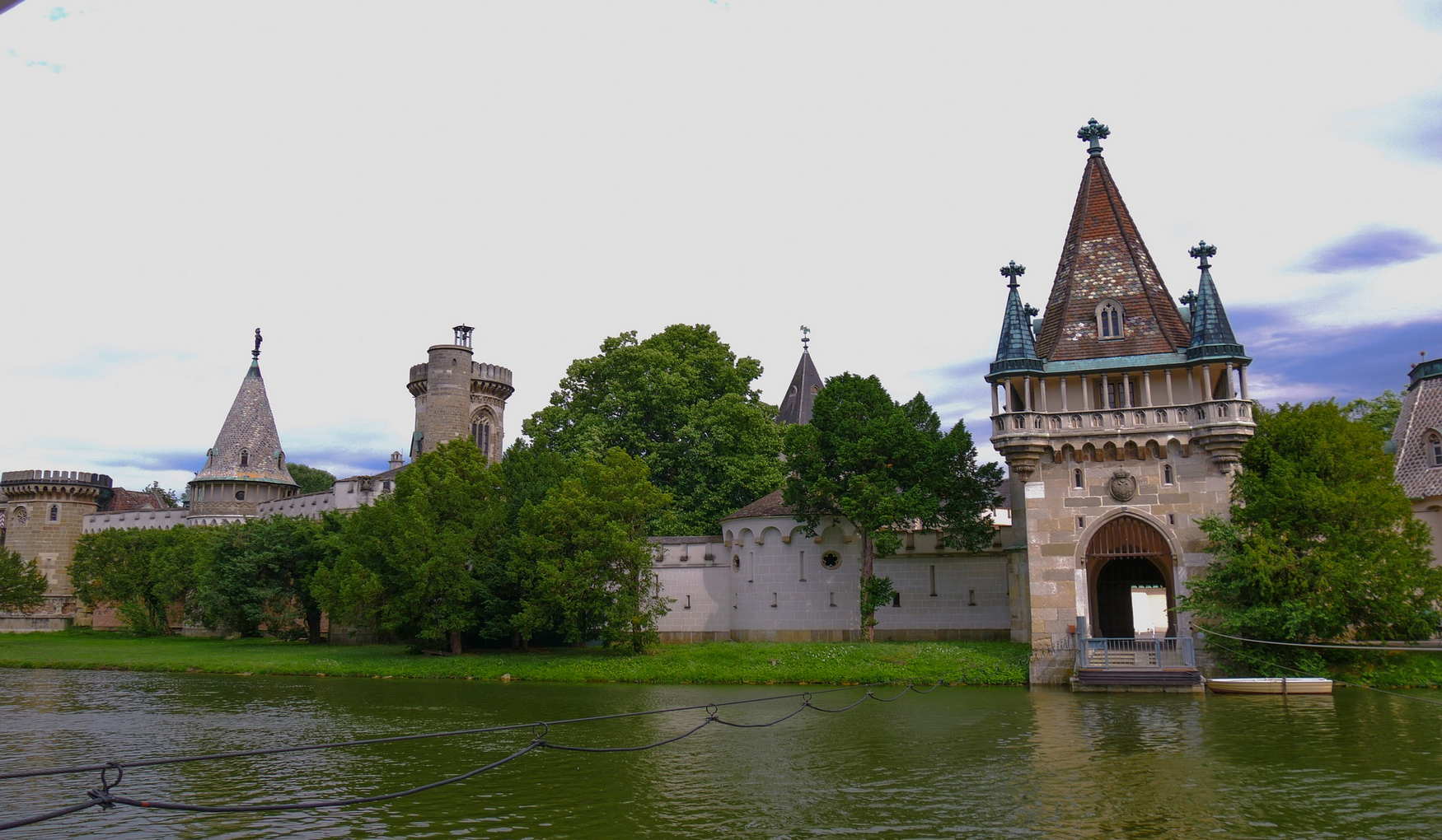Built in the best Baroque tradition, Laxenburg Palace is located just 15km from Vienna on the edge of the Vienna Woods. It is not just one building, but several palaces and castles with a lake and park — a favourite family holiday destination of all Austrian monarchs in the past and all families with children today.
In the eighteenth century the palace and park complex was a modest hunting lodge for temporary stays. Empress Maria Theresia saw its potential as a residence and began extensive renovations. She put all her ideas of perfect comfort into it, investing her heart and considerable sums of money. That's why Laxenburg Palace has been called the "romantic Habsburg fairy tale".
The building was then visited by the elite and life took on a rainbow of colours. The palace was transformed into a veritable entertainment complex with jousting tournaments, balls, hunts, theatre performances and horse rides.

Laxenburg's oldest palace, the Old Palace, which first appeared on the site of a former hunting lodge, has undergone several reconstructions. In the 17th century the palace simply fell into disrepair and had to be restored. All the work was carried out under the supervision of the architect Ludovico Burnachini.
A little later, at the end of the XVII century, the siege of Vienna by the Turks caused considerable damage, after which the castle was repaired and even the first floor was added. The First World War also left its mark on the castle. It was not until 1970 that it was completely rebuilt.
The last castle on Laxenburg was built in the 19th century on an artificial island. The castle is an architectural cocktail of Neo-Gothic and Classicism, more commonly known as Austrian Romantic Classicism.
It is a miniature building in the form of a medieval knight's castle, with towers and courtyards, battlements and elaborate interiors. The 'toy' castle is now a museum and anyone can book a tour to walk its corridors, climb its towers, walk on its roofs and even sample some Austrian food.
At first glance, Laxenburg Palace looks rather small, but as you get closer you'll be almost shocked by the scale of the imperial design and the many architectural and decorative elements that adorn the roofs, gates, facades and other parts of the castle. The main wing of the palace, with its grand entrance, overlooks the Town Hall Square.

There is also an old church and, a little further away, a monastery and another church. Laxenburg Castle in Austria was the favourite resting place of Princess Sisi, who married, honeymooned and had three of her children here.
Next to the castle are interesting Austrian cottages, many of which are over 100 years old.
Laxenburg Park has not retained its original appearance, but it is no less beautiful. Today it is an English landscape garden with lakes and artificial islands, spread over 250 hectares. There are many interesting structures in the park — steles, elegant pavilions and statues.
To create a more secluded and even romantic atmosphere, there are benches, manicured winding paths and artificial lakes throughout the park. There are many centuries-old trees and shady lanes. It is the abundance of greenery that gives the impression that the palace complex is not large enough, although this is only an illusion.
One of the most remarkable architectural features of the park is the Lace Pavilion with its unique acoustics. Harp concerts are regularly held here.
The activities on offer at Laxenburg Palace Park are not limited to walking. You can hire a boat and go sailing on the castle lake. The park is always full of families with children. There are toilets, plenty of cafes and playgrounds. Children under 6 can even ride bikes in the park.











